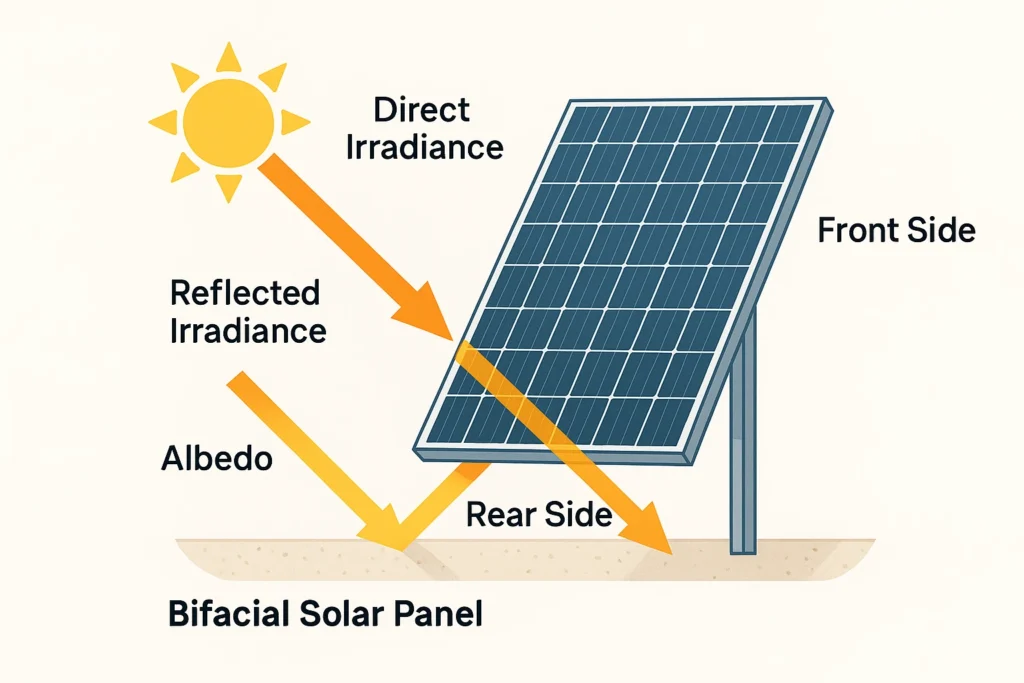In the ever-evolving world of renewable energy, one particular innovation is catching the attention of solar professionals and property owners alike: bifacial solar panels. Designed to harness sunlight from both the front and rear sides, these panels offer the potential for greater efficiency and increased energy output. But as we head into 2025, many are asking — is the excitement justified, or is this just another passing trend in solar technology?

What Are Bifacial Solar Panels?
As the name suggests, bifacial solar panels are designed to absorb sunlight from two sides — the front, which faces the sun, and the rear, which captures reflected light from the ground or surrounding surfaces. Typically constructed with transparent backsheets or dual layers of tempered glass, these panels utilize monocrystalline silicon cells to maximize performance and durability.
Why Are They Gaining Popularity in 2025?
Several trends in 2025 are contributing to the growing adoption of bifacial solar panels:
Commercial Scale Projects: Utility-scale installations are increasingly shifting to bifacial modules for improved returns and faster ROI.
Higher Efficiency Goals: With rising global energy demand and climate commitments, there’s a push for solar systems that deliver better output per square meter.
Falling Costs: The cost gap between traditional and bifacial panels has narrowed significantly, making them a more accessible option for homeowners and commercial projects.
Supportive Policies: In many states and countries, new incentives or relaxed import duties are making bifacial systems more financially attractive.
Why They’re Trending in 2025
Several factors are pushing this technology into the spotlight:
- Improved Efficiency Standards: With demand growing for systems that provide more energy in less space, panels that deliver extra output are becoming increasingly valuable.
- Lower Production Costs: Over the past few years, manufacturing improvements have brought prices closer to those of standard solar modules.
- Government Support: New policies and incentives across several countries now favor higher-efficiency solar installations, making bifacial systems a smart financial decision.
- Adoption in Large Projects: Utility-scale developers are leading the shift, choosing these systems for their reliability and long-term returns.
Key Benefits
1. More Energy per Panel
One of the primary reasons people are turning to this technology is the potential for a 10% to 30% increase in electricity generation. This can make a big difference, especially in high-latitude or highly reflective environments.
2. Better Output in Low-Light Conditions
Because the panels can absorb light at more angles, they perform well even on cloudy days or during early morning and late afternoon hours.
3. Extended Product Lifespan
Dual-glass construction often makes these panels more durable than standard models. Many come with extended warranties, providing performance assurance for 25 years or more.
4. Sleek Aesthetics
In modern architectural settings, these panels are often used as part of building-integrated systems, such as carports or pergolas, where the see-through back adds a clean and futuristic look.
Challenges and Considerations
Despite their benefits, bifacial solar panels aren’t a one-size-fits-all solution. Here are a few factors to consider before making the switch:
- Higher Installation Complexity: To achieve optimal backside reflection, panels must be elevated and installed on reflective surfaces, which may increase mounting costs.
- Ground Conditions Matter: If you’re installing panels on a dark rooftop or shaded area, the rear-side gain will be minimal, making them less efficient than promised.
- Not Ideal for All Roofs: Flat and highly reflective rooftops are ideal. Steep-pitched or shingle-covered roofs might not take full advantage of bifacial technology.
- Inverter Compatibility: Since energy output can vary more due to dual-side input, proper inverter sizing and system design become more critical.
Who Should Consider Them?
These panels make the most sense in specific use cases:
- Residential customers with flat rooftops and light-colored membranes may see a noticeable energy increase.
- Commercial properties and solar farms, especially in wide-open, unshaded spaces, can optimize performance and ROI.
- Installations in snow-prone or desert regions also stand to benefit from the natural reflectivity of the environment.
Final Thoughts: Worth It or Not?
In the right setting, these panels absolutely live up to their promise. They offer greater energy yield, longer life, and can even enhance the look of a solar array. However, without the right site conditions or system design, their advantages may be limited.
If you’re planning to go solar in 2025, consulting a knowledgeable solar designer or engineer is the best way to determine if this technology fits your specific needs. When used correctly, bifacial modules can be a powerful tool in maximizing the return on your solar investment.
📞 Contact us today and take the next step toward a smarter solar future.
